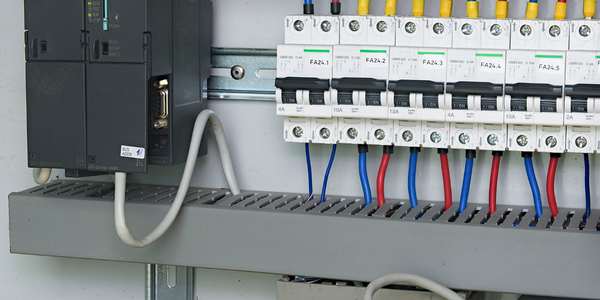Customer Company Size
Large Corporate
Region
- America
Country
- United States
Product
- Kenandy Cloud ERP
Tech Stack
- Salesforce Chatter
- Cloud Computing
Implementation Scale
- Enterprise-wide Deployment
Impact Metrics
- Productivity Improvements
- Digital Expertise
Technology Category
- Infrastructure as a Service (IaaS) - Cloud Computing
Applicable Industries
- Electronics
Applicable Functions
- Discrete Manufacturing
- Business Operation
Use Cases
- Manufacturing System Automation
- Supply Chain Visibility
Services
- Cloud Planning, Design & Implementation Services
- System Integration
About The Customer
Scott Fetzer Electrical Group (SFEG) is a consolidated organization formed by merging three individual companies, France Power Solutions, Northland Motor Technologies, and Kingston Products. All these companies were part of Scott Fetzer, a Berkshire Hathaway company. SFEG manufactures electrical or electromechanical products used for a wide array of applications. Their products are used to light up signs for movie theaters, sports stadiums, and car rental companies, and to cool, time, control, and power a broad array of devices and appliances. These range from medical equipment and hospital beds to household vacuum cleaners and washing machines, to industrial-strength blenders and room-sized 3D printers.
The Challenge
Scott Fetzer Electrical Group (SFEG) was formed by merging three individual organizations, France Power Solutions, Northland Motor Technologies, and Kingston Products. Each of these companies had been using versions of an on-premise ERP system, which was hastily reconfigured to serve the newly merged enterprise. However, the system had severe limitations such as lack of visibility, difficulty in use and configuration for fast-changing business needs, weak reporting capabilities, and no workflow/approvals capabilities. It quickly became apparent that a more modern system was needed to enable the consolidated organization to better compete in a world where its diverse products are used for a wide array of applications. SFEG needed a robust system that would improve visibility and agility while ensuring smooth and seamless operations.
The Solution
SFEG decided to implement Kenandy Cloud ERP to overcome the limitations of their previous system. Kenandy was easy to implement and use, which made the transition smoother for the employees. The system's mobile and Salesforce Chatter capabilities enhanced communication among employees, suppliers, and customers. It also allowed for remote checking of dashboards and instant approvals over mobile devices. Kenandy provided the perfect solution for enabling SFEG to modernize their operations to support business automation and robotics, and respond rapidly to changing customer requests. It helped SFEG to drive innovation not only in the products they create but also in the systems they use to run their enterprise.
Operational Impact
Quantitative Benefit

Case Study missing?
Start adding your own!
Register with your work email and create a new case study profile for your business.
Related Case Studies.

Case Study
Remote Temperature Monitoring of Perishable Goods Saves Money
RMONI was facing temperature monitoring challenges in a cold chain business. A cold chain must be established and maintained to ensure goods have been properly refrigerated during every step of the process, making temperature monitoring a critical business function. Manual registration practice can be very costly, labor intensive and prone to mistakes.

Case Study
Predictive maintenance in Schneider Electric
Schneider Electric Le Vaudreuil factory in France is recognized by the World Economic Forum as one of the world’s top nine most advanced “lighthouse” sites, applying Fourth Industrial Revolution technologies at large scale. It was experiencing machine-health and unplanned downtime issues on a critical machine within their manufacturing process. They were looking for a solution that could easily leverage existing machine data feeds, be used by machine operators without requiring complex setup or extensive training, and with a fast return on investment.

Case Study
Cloud Solution for Energy Management Platform-Schneider Electric
Schneider Electric required a cloud solution for its energy management platform to manage high computational operations, which were essential for catering to client requirements. As the business involves storage and analysis of huge amounts of data, the company also needed a convenient and scalable storage solution to facilitate operations efficiently.

Case Study
Leveraging the IoT to Gain a Competitive Edge in International Competition
Many large manufacturers in and outside Japan are competing for larger market share in the same space, expecting a growing demand for projectors in the areas of entertainment, which requires glamor and strong visual performance as well as digital signage that can attract people’s attention. “It is becoming more and more difficult to differentiate ourselves with stand-alone hardware products,” says Kazuyuki Kitagawa, Director of Service & Support at Panasonic AVC Networks. “In order for Panasonic to grow market share and overall business, it is essential for us to develop solutions that deliver significant added value.” Panasonic believes projection failure and quality deterioration should never happen. This is what and has driven them to make their projectors IoT-enabled. More specifically, Panasonic has developed a system that collects data from projectors, visualizes detailed operational statuses, and predicts issues and address them before failure occurs. Their projectors are embedded with a variety of sensors that measure power supply, voltage, video input/ output signals, intake/exhaust air temperatures, cooling fan operations, and light bulb operating time. These sensors have been used to make the projector more intelligent, automatically suspending operation when the temperature rises excessively, and automatically switching light bulbs. Although this was a great first step, Panasonic projectors were still not equipped with any capability to send the data over a network.









